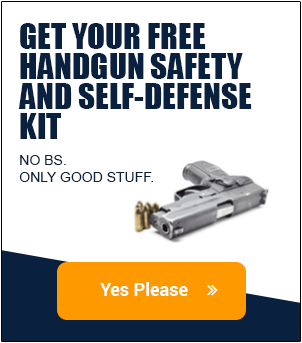Thanks for sticking with me and reading the second part of this article. Yesterday we talked about why you might not want your gun lying around lose in your car.
Another big topic I get a lot of questions about is how to handle a traffic stop while carrying a firearm. My first recommendation in this regard is to avoid keeping your firearm in the glove box of your vehicle. This is usually where people also keep the registration and insurance cards that the Police Officer will ask for.
As I mentioned yesterday, perception is everything. A quick way to turn a routine traffic stop into a potentially negative interaction with Law Enforcement would be to open the glove box and have a handgun fall out. Or, have the Law Enforcement Officer think that you are trying to directly accesses the firearm while you are actually trying to access what they are asking you for. American Concealed published a while article about how to deal with a traffic stop while you are carrying that was written following an interview with a 25-year veteran of Law Enforcement. I highly recommend reading it so you know the kinds of cues that a Police Officer will look for when they stop you and are worried about threats.
What I usually recommend is to simply add your concealed handgun permit or license in with the documentation you are giving to the officer. It is important to note that not all states require you to voluntarily disclose that you have a concealed firearm on your person. However, it is a courtesy. The Officer that we talked with for the article I just mentioned above says he very much appreciates being told. It puts him at ease and he knows what he’s dealing with rather than seeing an gun unexpectedly.
If the officer asks you if you are in possession of a gun, it would be advisable to be truthful and say yes. Then ask how he would like you to proceed. Then, comply with any and all of the Officer’s requests. If you are angry and don’t feel things are fair, sort it out later.
Adding your concealed handgun permit in with your license and registration will also prompt the officer to ask you if you have a firearm with you. This is a better way to inform the officer that you have a firearm than by looking at them in the beginning of the stop and saying, “I have a gun.” This could be taken very differently than how it was meant to be taken. The last thing you want is to put an officer on edge during a traffic stop, and keep in mind that you don’t know what call that Police Officer just came off of.
It is also advisable to do your research before travelling over state lines with a firearm. Playing it safe is always going to be the best option when travelling. If you are travelling through a state that does not recognize the validity of your concealed handgun permit, the most advisable option would be to keep the firearm unloaded and locked in a hard case outside of the passenger compartment of the vehicle.
It is also advisable to store the ammunition separately from the firearm. If you decide to look up which states you have reciprocity with, or any laws or regulations online, it is imperative that you only trust .gov websites. These sites are going to give you the most reliable, accurate and up to date information. As always, check with and always act in accordance with your local laws and regulations.


